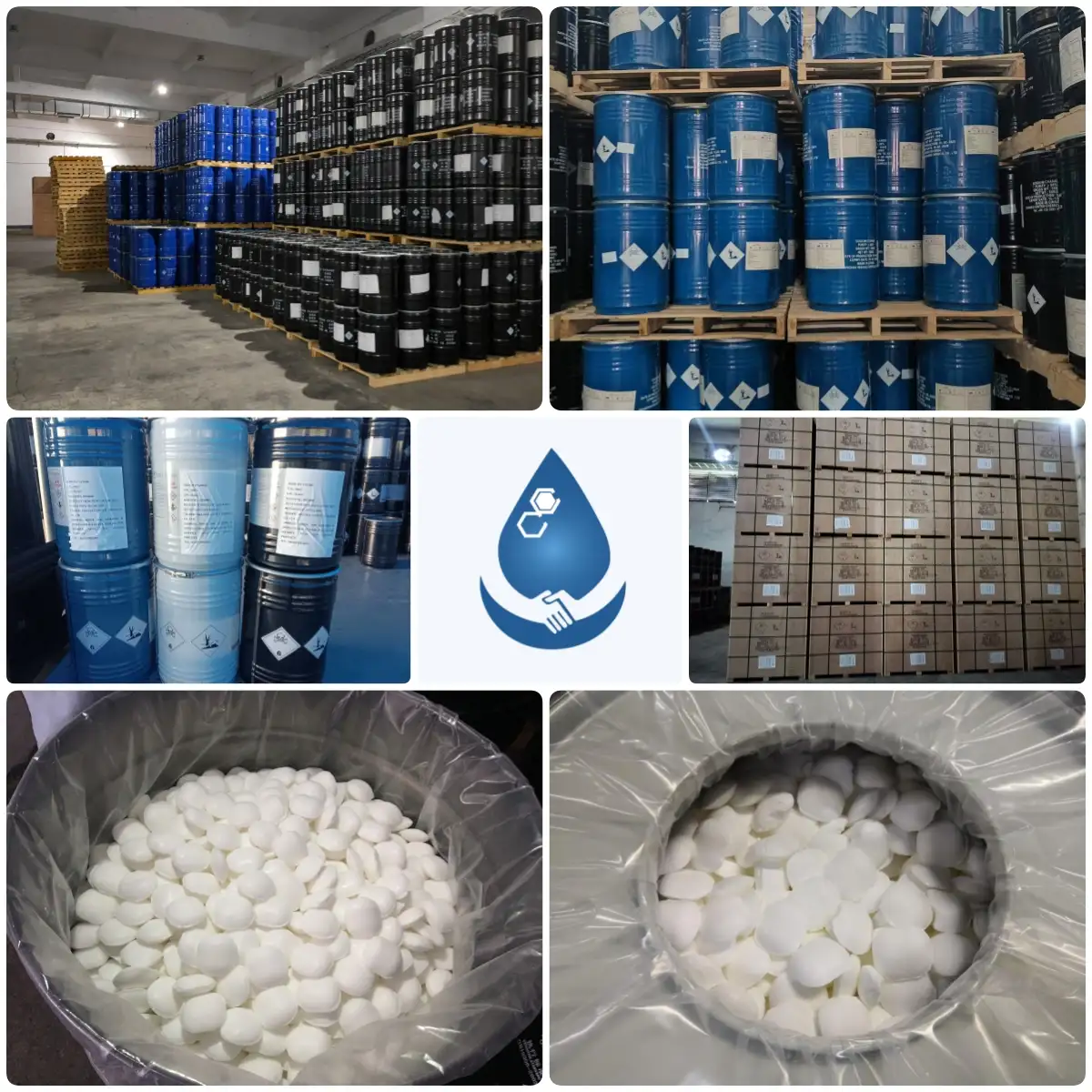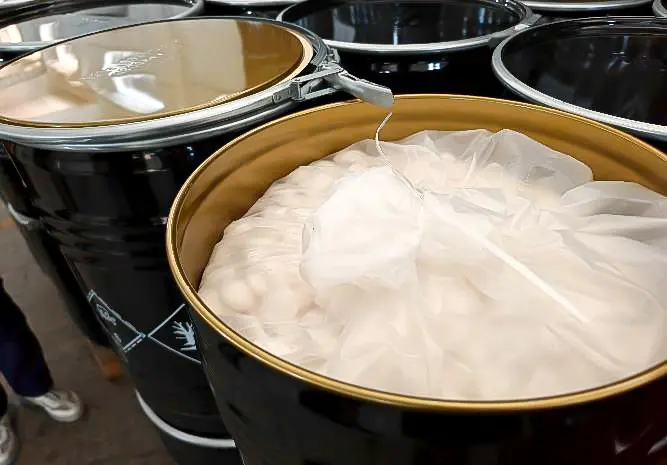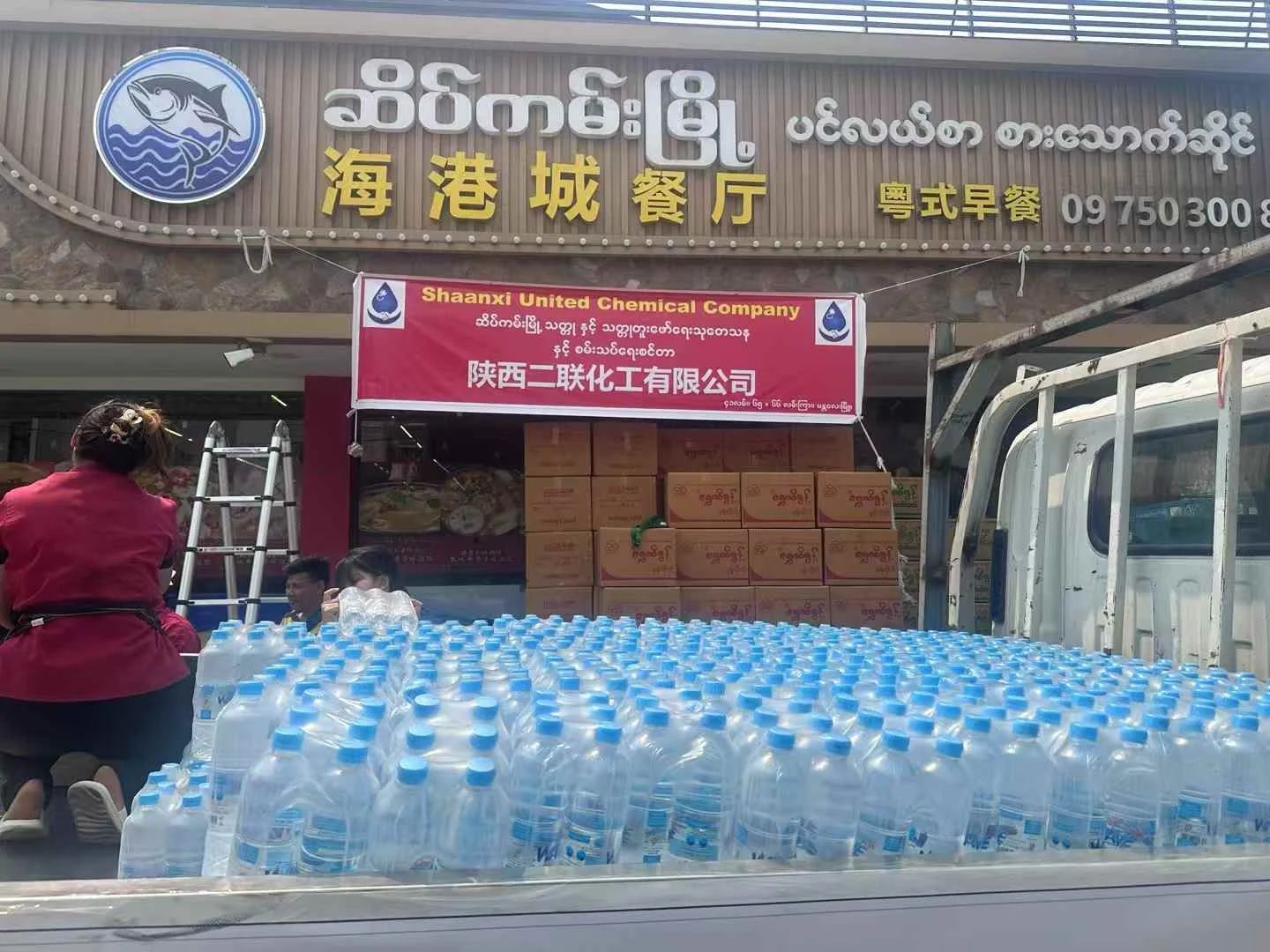Introduction
Sodium cyanide (NaCN) is a fundamental industrial chemical in mining and fine chemicals, most notably used for leaching gold and other precious metals. United Chemical prepares this industry primer to explain, in plain but professional language, the main industrial production processes for Sodium Cyanide, the technical features and product-quality differences of each process, the industry value-chain, and international trade dynamics. The goal is to inform customers, partners and the wider public while emphasizing safety, compliance and responsible supply.
Safety note:sodium cyanide is highly toxic. Production, transport, storage and use must strictly follow national and destination-country safety, environmental and hazardous-goods transport regulations. This article is for informational and promotional purposes only and does not provide operational details or recipes that could be misused.
1. What is Sodium cyanide? (Brief)
Sodium cyanide (NaCN) is a white, cubic crystalline inorganic salt that forms soluble complexes with gold and other noble metals. Because of this property it is widely used in mineral leaching (especially gold cyanidation). It also finds application in electroplating, pharmaceutical and fine-chemical intermediates, agrochemical synthesis, and as a reagent in laboratories. Due to its toxicity, rigorous management, emergency preparedness and environmental controls are essential across the supply chain.

2. Main industrial production routes & technical characteristics (high-level)
The historically used or currently practiced industrial production routes include: fusion/smelting (historical), An’s method, light-oil cracking, methanol–ammoniation, and acrylonitrile by-product (co-product) recovery. Below we summarize each process, its merits/limitations, and typical product quality characteristics to help buyers and partners understand process-quality relationships.
1) Fusion / smelting method (historical)
Process summary: a traditional furnace/fusion route that produces substantial solid, liquid and gaseous wastes and consumes high energy.
Status: Largely phased out in modern industry due to environmental and energy disadvantages.
Typical product quality:
Purity (NaCN content): generally low and variable.
Organic / sulfur impurities: relatively high, depending on fuel and raw materials.
Heavy metals: may be elevated if raw materials or equipment are not strictly controlled.
Moisture / caking: higher moisture and poor storage stability if drying/post-treatment is inadequate.
Form: coarse lumps or irregular particles; often requires downstream refinement.
Downstream suitability: poor for high-grade or sensitive uses (pharmaceuticals, electronics); only acceptable for low-spec applications where cost is the main factor.
2) An’s method (An’s process)
Process summary: a mature process that typically operates near atmospheric pressure, requires no external heat input in some configurations, and has relatively low electrical consumption; however, it often requires specific catalytic media and catalyst costs can be high.
Typical product quality:
Purity: medium to high and relatively stable with good process control.
Organic / sulfur impurities: generally low if feedstocks and controls are clean.
Heavy metals: controllable via feed and downstream purification.
Moisture / stability: can achieve low moisture and good storage stability with adequate drying.
Form: can be produced as flakes, granules or powder with uniform particle size.
Downstream suitability: suitable for mining (leaching), industrial electroplating and many fine-chemical applications; may require additional purification for pharmaceutical uses.
3) Light-oil cracking method
Process summary: uses cracked light oil or furnace gases as feed to produce cyanide intermediates; often catalyst-free and tolerant of lower-grade feedstocks. Tail gas treatment is complex.
Typical product quality:
Purity: moderate; dependent on purification of the cracked streams.
Organic residues: possible organic remnants from cracking—requires strong washing and separation.
Sulfur: usually low if feedstock is desulfurized; certain conditions can introduce sulfur species.
Heavy metals: typically not high but depend on feed and equipment.
Moisture / stability: controllable with proper drying, but poor drying leads to caking.
Form: powder or granules with wider particle size distribution.
Downstream suitability: widely used for mining leaching and general electroplating; additional purification needed for organic-sensitive fine chemical applications.
4) Methanol–ammoniation method (methanol–ammonia process)
Process summary: uses methanol and ammonia as principal feedstocks to produce cyanide intermediates, typically under catalytic conditions. This route is widely adopted because methanol is a mature, widely available feedstock. It offers high conversion efficiency and lower energy consumption.
Typical product quality:
Purity: generally high and stable under proper process control.
Organic impurities: low when separation and washing stages are well designed.
Sulfur: low (clean methanol/ammonia feeds).
Heavy metals: controllable at low levels by material and feed control.
Moisture / stability: low moisture and good anti-caking characteristics after proper post-treatment.
Form: can produce high-quality flakes or granules suitable for commercial sale.
Downstream suitability: widely applicable — excellent for mining leaching (high recovery), electroplating and many fine chemical applications; competitive option for regions with stable methanol/ammonia supply.
5) Acrylonitrile co-product (by-product) recovery
Process summary: sodium cyanide is recovered as a co-product from acrylonitrile manufacturing processes; this is an economical route when integrated with acrylonitrile production.
Typical product quality:
Purity: high and stable; one major advantage is typically very low sulfur content.
Organic impurities: low due to established separation/recovery systems.
Sulfur: usually very low — a key advantage.
Heavy metals: typically low depending on upstream control.
Moisture / stability: good — low moisture achievable through standard processing.
Form: common commercial shapes such as flakes or granules with attractive appearance and stability.
Downstream suitability: very suitable for mining leaching and applications sensitive to impurities; production volume, however, depends on acrylonitrile plant operation and is therefore tied to co-product availability.
Note: the above product-quality summaries are high-level industry generalizations. Actual quality metrics depend on feedstock quality, process control and downstream purification/drying/packaging steps. For specification or procurement, always require a Certificate of Analysis (COA).
3. Key quality metrics and how they affect downstream use
These are the common quality attributes procurement teams and end users should prioritize and test in COAs:
NaCN content (% w/w): determines effective cyanide dose and leaching performance.
Free cyanide / soluble cyanide: affects reactivity and safety handling.
Moisture content (%): impacts storage stability and shipping (high moisture → caking).
Soluble alkali (e.g., NaOH) / free alkalinity: changes solution pH and can influence leaching chemistry.
Sulfur species / sulfate / chloride: certain impurities negatively affect sensitive syntheses.
Organic residues: organics can consume cyanide via side reactions, reducing effective cyan availability for leaching.
Heavy metals (Pb, Hg, Cd, etc.): critical for pharmaceutical/fine chemical uses and environmental compliance.
Particle size & form (flake / pellet / powder): influences dissolution rate, dosing convenience and transport behavior.
Examples of downstream impacts:
Gold leaching: prefers high NaCN, low organics and controlled alkalinity for optimal recovery.
Electroplating: sensitive to sulfur and heavy metals; uniform, pure cyanide preferred.
Pharma/fine chemicals: demands the strictest heavy-metal and organic impurity limits — often requires extra purification.
4. High-level quality comparison table
| Process | Typical NaCN purity | Sulfur / organic impurities | Heavy metals | Moisture & stability | Typical form | Downstream fit |
|---|---|---|---|---|---|---|
| Fusion / smelting (historical) | Low / variable | High | May be high | Poor; caking risk | Coarse lumps / irregular | Low (low-end uses only) |
| An’s method | Medium–high, stable | Low | Controllable low | Good | Flakes / granules / powder | Good for mining & electroplating |
| Light-oil cracking | Medium | Possible organics | Generally moderate | Depends on drying | Powder / granules (broad size) | Mining main use; needs purification for fine uses |
| Methanol–ammoniation | High & stable | Low | Low | Good | High-quality flakes / granules | Broad: mining, plating, fine chemicals |
| Acrylonitrile co-product | High & stable | Very low | Low | Very good | Flakes / granules | Excellent for mining & impurity-sensitive uses |
Table is a generalized industry reference. Always verify product COA and do on-site trials for critical applications.
5. Process comparison — key dimensions (summary)
Environmental footprint / emissions: fusion/smelting > light-oil cracking / An’s method > methanol–ammoniation ≈ acrylonitrile co-product (">" means “greater environmental burden”).
Energy consumption & operating cost: fusion & light-oil cracking tend to be more energy intensive; methanol–ammoniation and acrylonitrile co-production typically show cost advantages when feedstocks are favorably priced.
Production flexibility: methanol–ammoniation and An’s method offer better independent control of production capacity; co-product (acrylonitrile recovery) is tied to acrylonitrile plant output.
Safety & automation: An’s and methanol–ammoniation are comparatively more amenable to lower-temperature operation and higher automation; light-oil cracking and fusion require more stringent tail-gas and high-temperature safety controls.
6. Industry value chain (upstream — midstream — downstream)
Upstream — raw materials & equipment
Primary raw materials: soda ash (Na₂CO₃), liquid ammonia (NH₃), methanol (CH₃OH), urea, caustic solutions, light oil and others depending on process choice.
Major equipment & services: reactors, distillation and separation units, storage tanks, tail-gas treatment systems, monitoring and safety systems, and EPC (engineering, procurement & construction) contractors and catalyst suppliers.
Participants: feedstock suppliers (methanol, ammonia, refiners), equipment manufacturers, catalyst producers, engineering firms.
Midstream — production, quality control & trade
Functions: manufacturing (various process routes), product grading and packaging (flakes, pellets, powders; common commercial purities such as 98% NaCN), third-party testing and certification, distribution and international trade.
Key concerns: raw material pricing, environmental compliance, emergency preparedness, hazardous goods packaging and logistics.
Downstream — end uses & customers
Major end markets: metal leaching (gold & other precious metals — largest volume use), electroplating, pharmaceutical and fine-chemical intermediates, agrochemical synthesis, flotation additives and laboratory reagents.
Customer requirements: high standards for supply reliability, consistent quality and hazardous-goods handling; mining projects in particular require predictable timing and documentation.
7. International trade & export trends (industry snapshot)
Overall trajectory: since China’s economic opening, the country has evolved from a sodium-cyanide importer to one of the world’s largest producers and exporters. Exports to Latin America, Africa, Oceania, Central Asia and Southeast Asia have grown in recent years. Disruptions to overseas production (e.g., pandemic-era effects) have often increased demand for Chinese suppliers.
Representative data: in 2024, China’s sodium cyanide exports were approximately 216,000 tonnes (21.6 ×10⁴ t), up 12.03% year-on-year, with export value around USD 454 million, up 1.34% year-on-year.
Major destinations: Africa, South America, Russia, West Asia and Southeast Asia. Countries such as Russia, Peru, Zimbabwe, Mexico, Niger, Turkey and Burkina Faso together accounted for roughly 57.15% of exports, with other regions sharing the remainder.
Market drivers: expansion of gold mining, growth in agrochemical/fine-chemical industries overseas and relative cost and capacity advantages of Chinese producers.
Trade risks: hazardous-goods transport rules, destination-country environmental or safety requirements, geopolitical and logistics disruptions, currency and payment risks.
8. Industry risks, compliance priorities and recommendations for enterprises
Prioritize safety & environment: invest in robust tail-gas and wastewater treatment, leak detection, emergency response and community communication to minimize accident and regulatory risk.
Secure raw-material supply: establish long-term contracts or strategic partnerships with methanol, ammonia and other key suppliers to stabilize costs and supply.
Choose process by local conditions: select production routes based on feedstock availability, energy costs, environmental regulation stringency and desired product quality.
Diversify markets & services: expand downstream markets (e.g., agrochemical intermediates, electroplating, lab reagents) and offer technical support, on-site safety training and hazardous logistics services to increase customer retention.
Quality assurance: require Certificates of Analysis, batch traceability and partner with accredited labs; for high-spec applications provide additional purification or bespoke QC guarantees.
Export compliance: closely monitor international transport & import rules for cyanides and implement robust documentation, packaging and carrier vetting to avoid shipment delays or rejections.
Conclusion — United Chemical’s commitment
United Chemical recognizes that sodium cyanide production and trade carry not only commercial value but also substantial responsibility. We commit to:
adopting cleaner, stable production routes and continuously improving energy efficiency and emissions control;
enforcing rigorous quality inspection, hazardous-goods management and customer documentation;
offering tailored formulations, technical support and compliance guidance to global partners;
ensuring reliable supply chains while upholding safety and environmental stewardship.
For inquiries about specifications, COAs, packaging and regulatory documentation, or to request technical support and safe-handling training, please contact United Chemical via our official website or regional sales offices. United Chemical looks forward to partnering with global mining and chemical customers on safe, compliant and high-quality supply solutions.
- Random Content
- Hot content
- Hot review content
- Collector BLK-301/Composite Flotating Active Matter ≥60%
- T-610 collector Salicyl oxime acid derivative Content 3.5%
- IPETC 95%Metal sulfide mineral collector Z-200
- Oxalic acid for mining 99.6%
- Sodium Sulfide Industry Grade 60% 30ppm/150ppm Yellow/ Red Flakes Na2s
- Powdery emulsion explosive
- High-strength, High-precision Shock Tube Detonator
- 1Discounted Sodium Cyanide (CAS: 143-33-9) for Mining - High Quality & Competitive Pricing
- 2China's New Regulations on Sodium Cyanide Exports and Guidance for International Buyers
- 3Sodium Cyanide 98% CAS 143-33-9 gold dressing agent Essential for Mining and Chemical Industries
- 4International Cyanide(Sodium cyanide) Management Code - Gold Mine Acceptance Standards
- 5China factory Sulfuric Acid 98%
- 6Anhydrous Oxalic acid 99.6% Industrial Grade
- 7Oxalic acid for mining 99.6%
- 1Sodium Cyanide 98% CAS 143-33-9 gold dressing agent Essential for Mining and Chemical Industries
- 2High Quality 99% Purity of Cyanuric chloride ISO 9001:2005 REACH Verified Producer
- 3Zinc chloride ZnCl2 for High Molecular Weight Polymers Initiator
- 4High Purity · Stable Performance · Higher Recovery — sodium cyanide for modern gold leaching
- 5High Quality Sodium Ferrocyanide / Sodium Hexacyanoferr
- 6Gold Ore Dressing Agent Safe Gold Extracting Agent Replace Sodium Cyanide
- 7Sodium Cyanide 98%+ CAS 143-33-9










Online message consultation
Add comment: